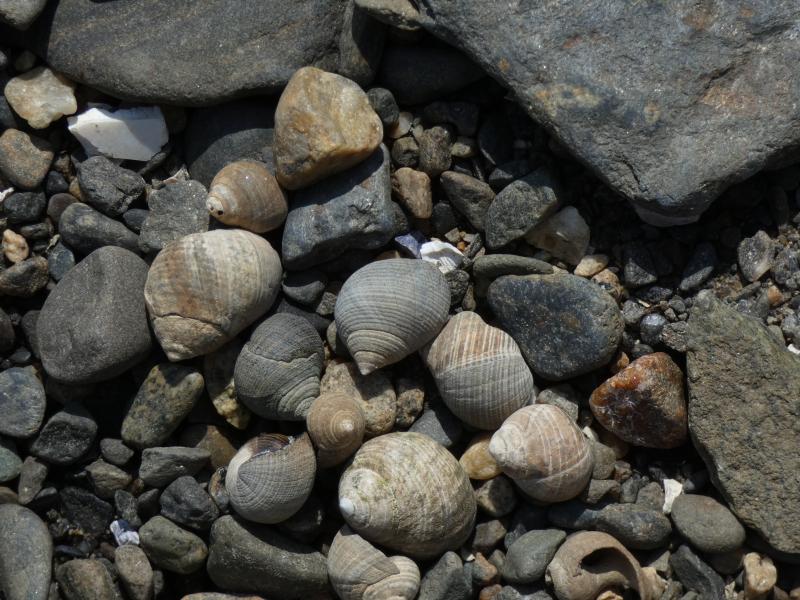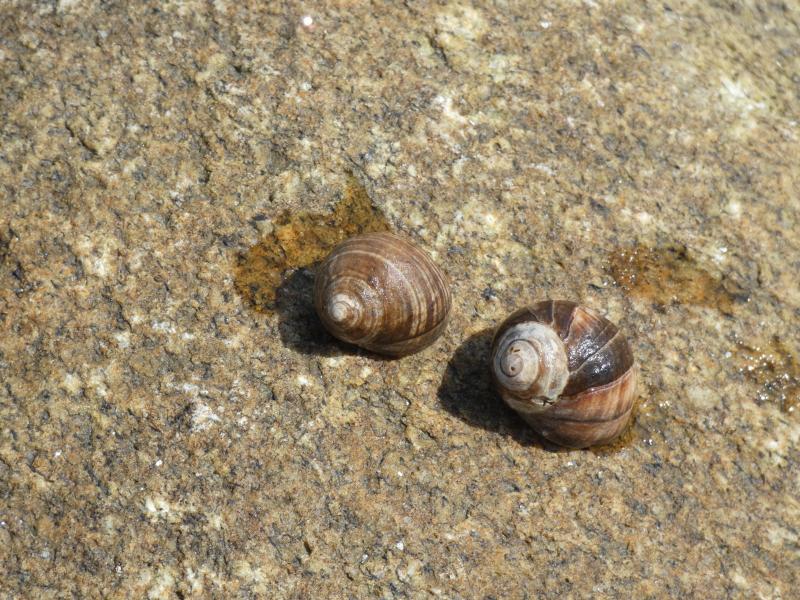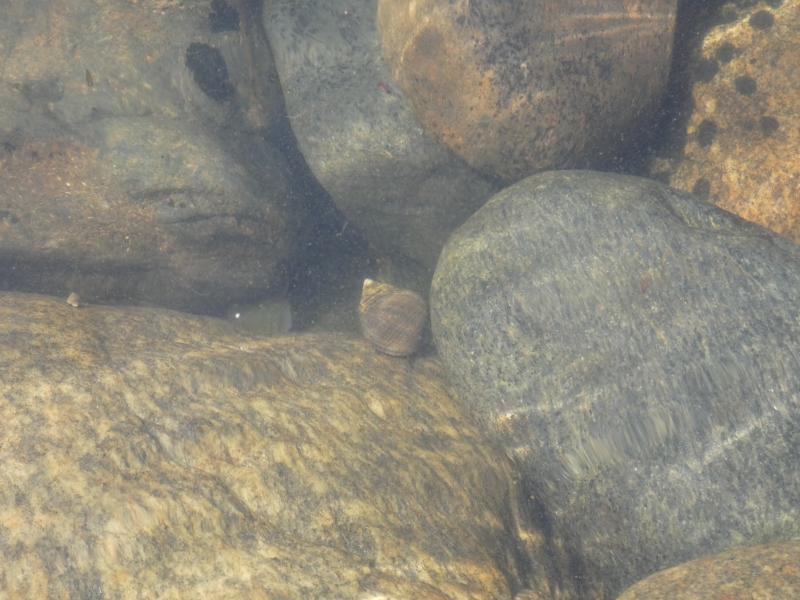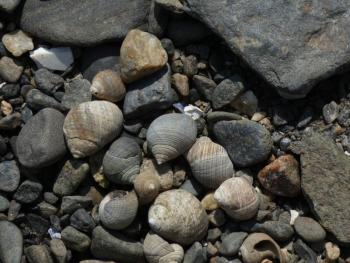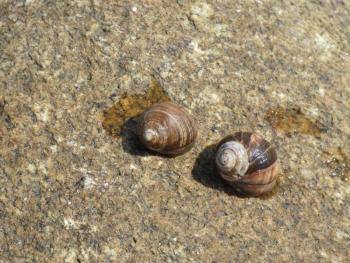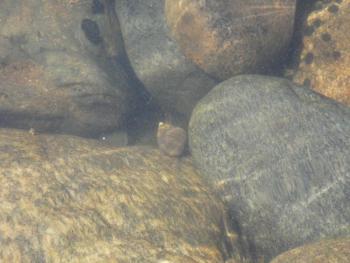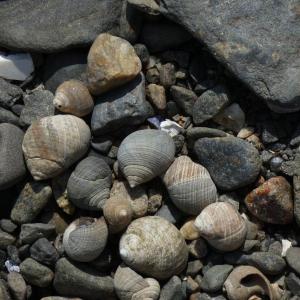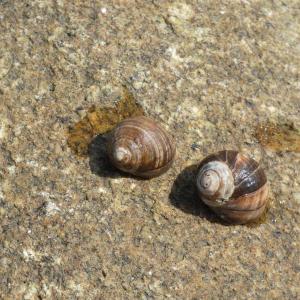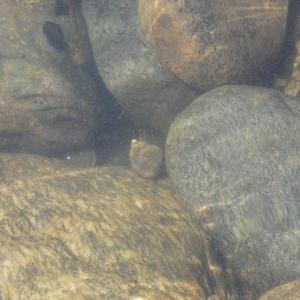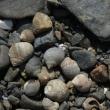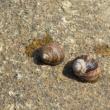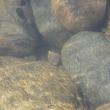Kristen Lindquist: Pondering a pocketful of periwinkles
Who here on the coast of Maine doesn't have their handful of shells, mussel shells on a windowsill, or little jar of periwinkles? Who doesn't pick up one or two from the beach each summer, to be found months later tucked in a pocket of an old sweatshirt?
When I was a kid, I spent hours on a cobble beach near my grandparents' Lincolnville home, searching for whatever cool things I could find: cool rocks, fossils, starfish, shells. Periwinkles were by far the predominate shells on this shore. These hard little knobs of calcium carbonate could withstand being pummeled by waves onto rocks, remaining mostly intact. I would sometimes find small heaps of them tucked between rocks on the beach, caches of sun-bleached, sea-worn snails that fell from my fingers with a pleasing tinkling sound. Smooth grey with fine stripes, checkered brown, mauve, black with seawater—or if I was lucky, I'd find little yellow ones with flatter whorls that looked like tiny moon snails. I'd look for ones with holes so I could string them into necklaces.
The living periwinkles also fascinated me. What child of the coast hasn't knelt by a tide pool and watched with rapt attention the meanderings of a sea snail, waiting for its little antennae-like upper tentacles to emerge, for its slow slide across an underwater rock face? Who remembers picking up a periwinkle and humming to it, hoping to induce its little trapdoor operculum to open up and reveal the supposedly music-loving creature within? Or just as exciting, picking it up to see that the shell's inhabitant is no longer the original snail but a tiny hermit crab that can scuttle across the tide pool in a flash.
Years later I came to realize that Maine beaches offer up three different species of periwinkle: common, smooth, and rough. It will come as no surprise that the most abundant species, the grey-brown snail we see studding the rockweed and intertidal rocks, is the common periwinkle. The farther out from the shore, the bigger they usually are, with some growing up to a couple of inches in size.
The rough periwinkle is generally the smallest of the three species, with rougher ridges on its shell and a more pointed spire, or shell tip. And my favorite little yellow one is the smooth periwinkle, also known as the northern yellow periwinkle, although some can be rosy brown in color. I have stashes of these pretty periwinkles all around my house, in bottles, in bowls, in pockets. There's something about that yellow-gold color that especially appeals to me, as if a little bit of the full moon had landed at the ocean's edge.
Interestingly, the common periwinkle didn't used to be so common. It is actually a non-native species thought to have been introduced in the early 1800s to the western side of the Atlantic, in Nova Scotia, via ships' released ballast. It quickly prospered, and flourishes now from Labrador all the way down the coast to Delaware. Marine biologists note that this invasive species has largely displaced the native rough periwinkle, as well as mud snails on tidal flats. And their feeding preferences have undoubtedly affected the growth of various micro-algae and other plants along the Maine coast, although this has only recently begun to be a focus of study. Other recent studies have also found that the common periwinkle may have been present in small numbers in maritime Canada up to 1,000 years ago, but didn't become widespread (and show up in Maine) until its subsequent introduction in Nova Scotia.
When I was a kid, someone told me that periwinkles were vegetarians, while the little white dog whelks were carnivores that drilled into the sides of other gastropods to suck out their innards. Naturally this disposed my tender-hearted young self to the periwinkles. But it didn't prevent me from trying to eat them! I remember several times collecting a plastic pail of periwinkles that my grandparents then steamed, and we picked out the meat with lobster picks as if they were miniature escargot. (Which they kind of are.) It was a lot of work for a tiny bit of meat. We preferred mussels.
In Down East Maine, periwinkles, called "wrinkles," are commercially harvested for food. A good commercial wrinkler can bring in over 100 pounds in a day. As with other creatures collected from Maine waters—sea urchins, baby eels, whelks (also sometimes called wrinkles)—many of the harvested snails are ultimately bound for Asian markets. But they're also on the menu at one of our favorite places to eat on the Schoodic Peninsula, a bar/restaurant aptly named the Pickled Wrinkle.
Without a license, you can collect up to two quarts of periwinkles if you want to try them for yourself. Your competition for such a meal includes the green crab, another invasive species in Maine waters. In a case of one invasive species preying on another, sometimes it can be hard to know who to root for. Other species of crab will eat periwinkles, after crushing them in their claws. Herring Gulls, Long-tailed Ducks, Red Knots, starfish, and even flounder consider them a tasty treat, according to the Invasive Species Compendium.
Next time you pocket a silvery summer periwinkle, roll it in your fingers and try to think about it as more than just a pretty shell. This too was once alive, though living on a scale we can barely perceive. Imagine what a strange and unfathomable life such a creature must have led: licking seaweed off rocks, dodging the mouths of flounder, tumbling within waves, releasing its eggs each spring in tune with the full and new moon high tides—and slowly wending its way through the cold and salty waters of Maine as if it truly belonged here.
Kristen Lindquist is an amateur naturalist and published poet who lives in her hometown of Camden.

Event Date
Address
United States

